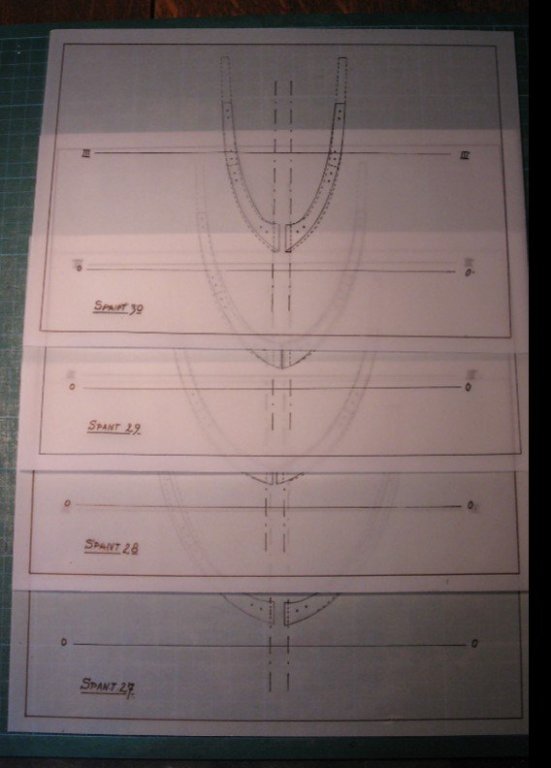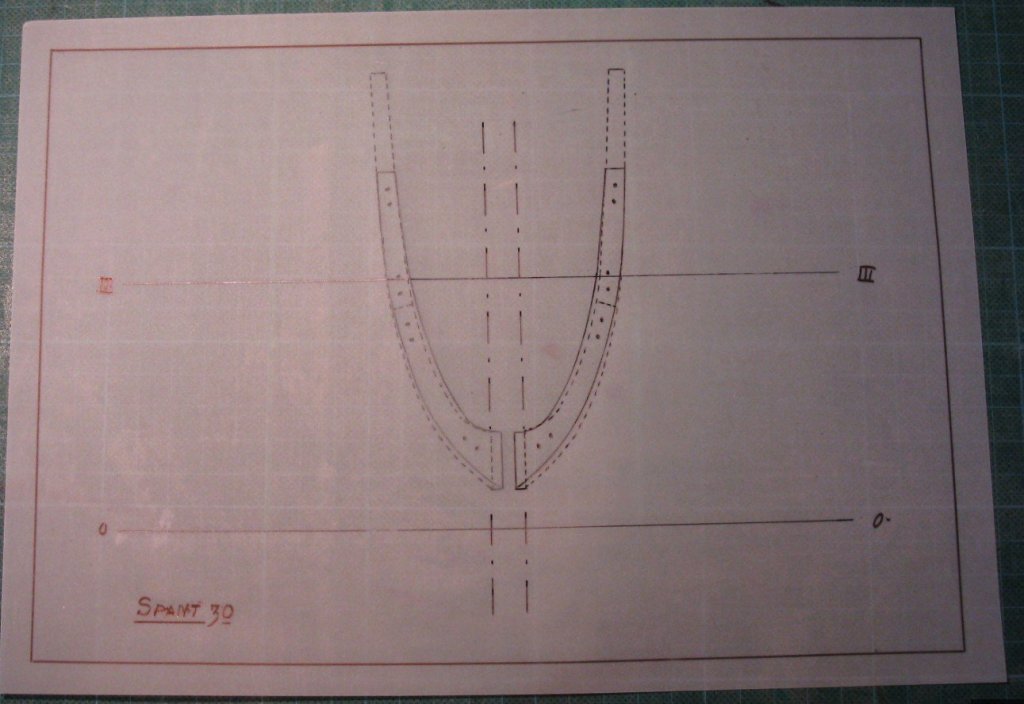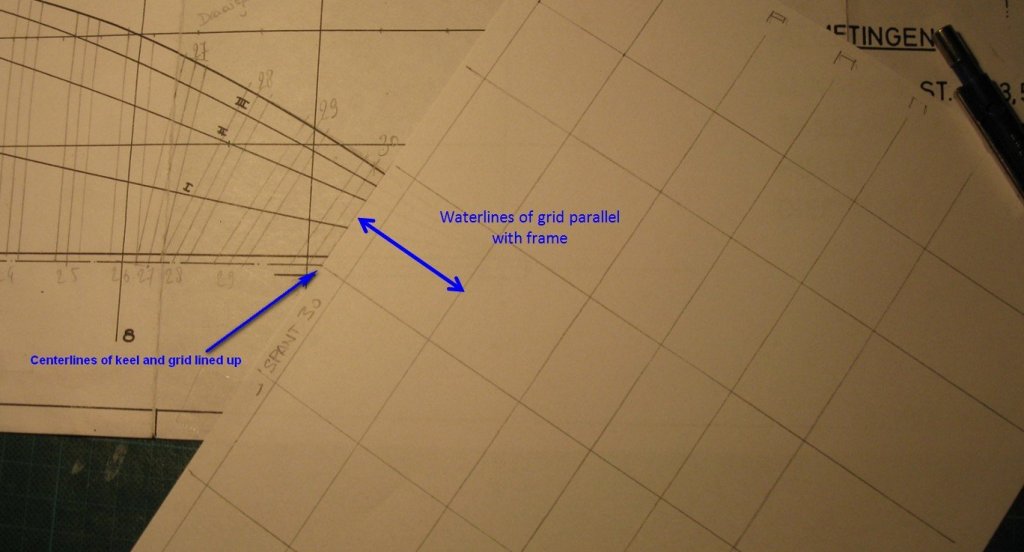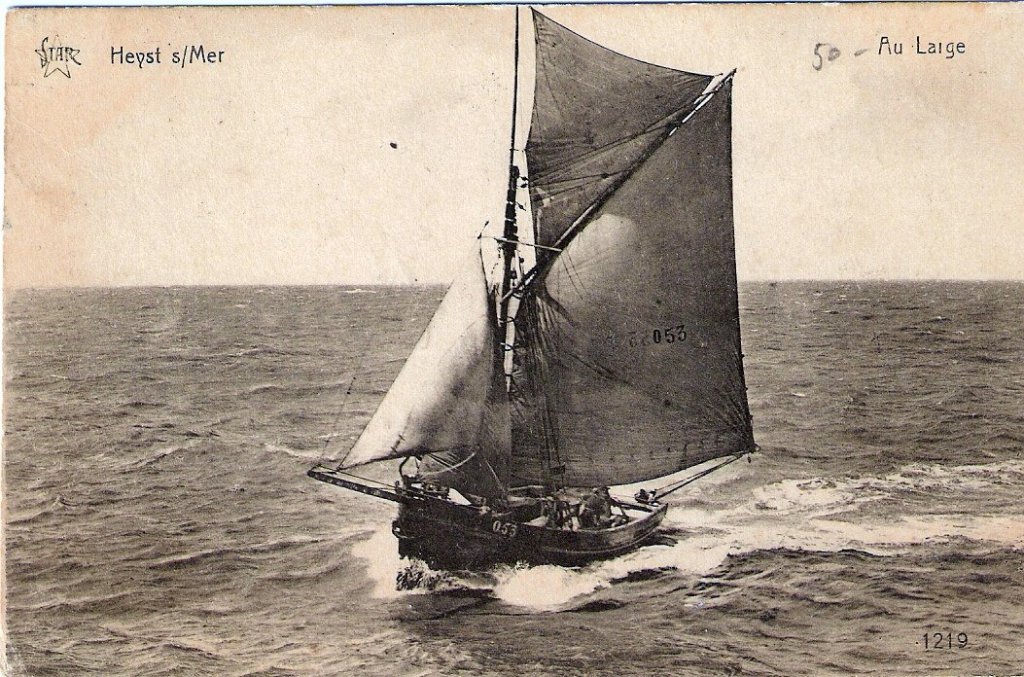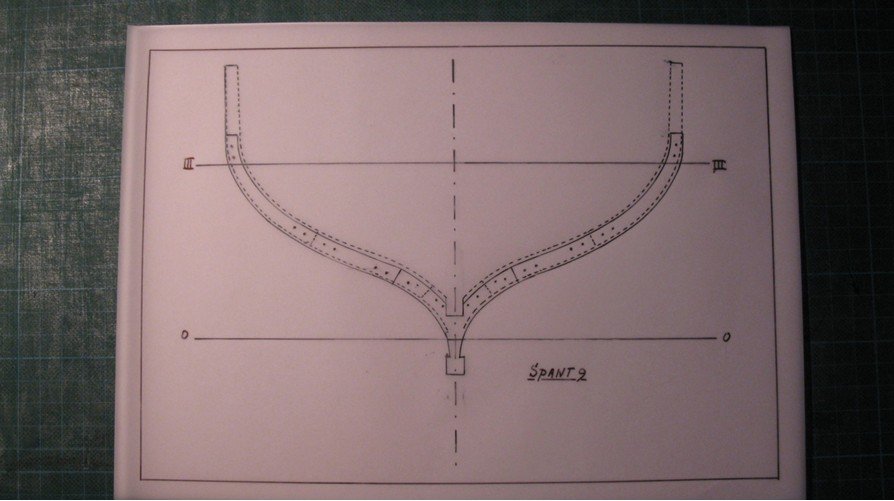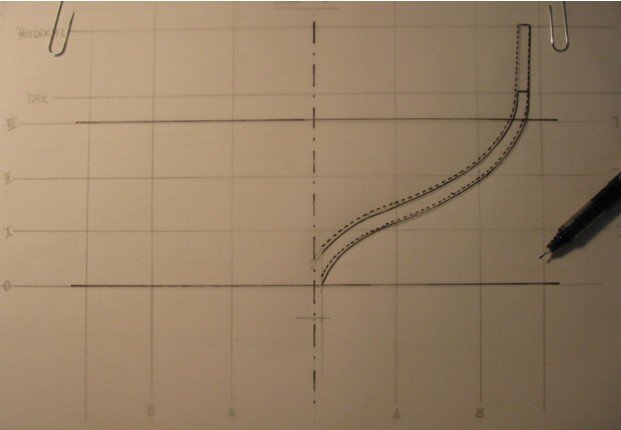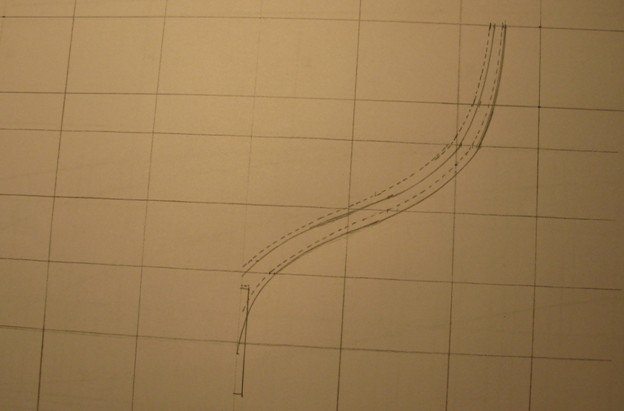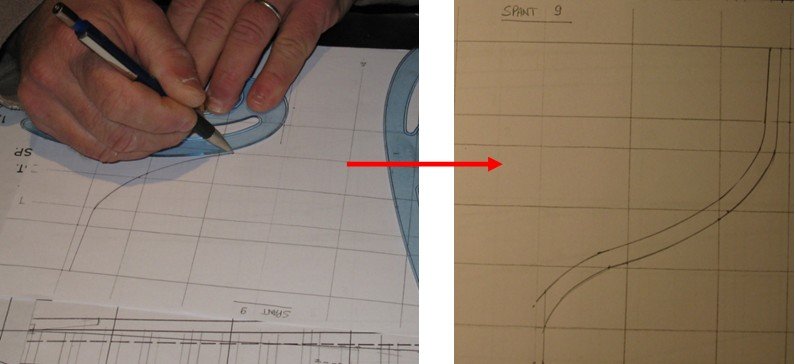-
Posts
1,553 -
Joined
-
Last visited
Content Type
Profiles
Forums
Gallery
Events
Everything posted by G.L.
-
Part 3: Making keel and stems 3.1 Time to get to work now. The wood that I use is provided by my garden. Many years ago I planted a cherry tree in the garden, when the tree started to bear fruit, it were plums instead of cherries. Two years ago I made finally the decision and removed the tree and replaced it by a real cherry tree. The wood is dry now and ready to be sawn and planed into planks. Remark afterwards: After completing stems, keel and frames I made some samples of the finishing color for the planking an discovered that the plum wood did not give a finishing result that I liked. Therefore for the planking of the hull I changed to oak, the wood which was in reality used to build the Flemish shrimpers.
-
The stringers are 2.5 mm thick, so I plane two planks to that thickness (2 because there have to be made 2 stringers in mirror image). I set my table saw for a thickness of ±1.2 mm and saw the grooves for the steps. Some time ago I made a simple table saw sled on which I glued a piece of millimeter paper, that makes it easy to saw the groves exactly parallel and with the correct intervals.
-
Patrick, Looks great! If I was You I would also treenail below the waterline, just for completeness. Looks me a nice job for a Sunday afternoon in a comfortable and heated hobby room like yours with some good music at the background. G.L.
- 756 replies
-
- galleon
- golden hind
-
(and 2 more)
Tagged with:
About us
Modelshipworld - Advancing Ship Modeling through Research
SSL Secured
Your security is important for us so this Website is SSL-Secured
NRG Mailing Address
Nautical Research Guild
237 South Lincoln Street
Westmont IL, 60559-1917
Model Ship World ® and the MSW logo are Registered Trademarks, and belong to the Nautical Research Guild (United States Patent and Trademark Office: No. 6,929,264 & No. 6,929,274, registered Dec. 20, 2022)
Helpful Links
About the NRG
If you enjoy building ship models that are historically accurate as well as beautiful, then The Nautical Research Guild (NRG) is just right for you.
The Guild is a non-profit educational organization whose mission is to “Advance Ship Modeling Through Research”. We provide support to our members in their efforts to raise the quality of their model ships.
The Nautical Research Guild has published our world-renowned quarterly magazine, The Nautical Research Journal, since 1955. The pages of the Journal are full of articles by accomplished ship modelers who show you how they create those exquisite details on their models, and by maritime historians who show you the correct details to build. The Journal is available in both print and digital editions. Go to the NRG web site (www.thenrg.org) to download a complimentary digital copy of the Journal. The NRG also publishes plan sets, books and compilations of back issues of the Journal and the former Ships in Scale and Model Ship Builder magazines.




